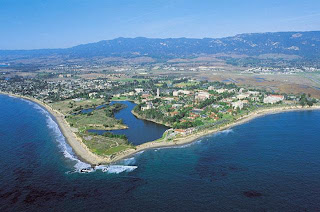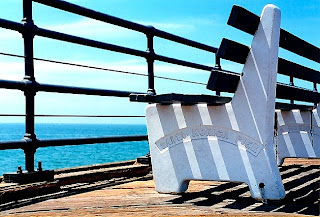Turner (2006) defined neogeography as “…people using and creating their own maps, on their own terms and by combining elements of an existing tool set." Here I have created a map that draws from my own interests and shared it with others. When I was in high school, my friends and I liked going to the beach because I am from Santa Barbara. This was especially the case in the summer time, but since the weather was relatively constant year round, going to the beach was not uncommon. Whether we went to the beach to play football, volleyball, Frisbee, to skim board, surf, boogie board, or just to go and hang out, we would always get hungry when we were leaving. Since we liked to keep things cheap, we would go to a fast food restaurant to curb our appetite. Burgers were always a favorite. Nothing like greasy American food to fill you up after the being at the beach. My personal favorite was and is Jack in the Box. This is because Jack in the Box has so many chicken options. Many argue otherwise, but I do not eat beef or pork so my loyalty to fast food burger places lies with Jack in the Box. Since then, I have preferred a little higher quality burger places like Fatburger, but I always stop by Jack in the Box every now and then.
Commentary:
I would like to take a moment to point out the pros and cons of my map. Although it is an interesting way for the University of California campus community to view the different routes to the various beaches, there are some factors one should consider. The locations for the starting points were chosen arbitrarily (wherever Google had the name of the campus displayed, was where the starting point was made). Also the the beaches that were chosen as ending points were chosen by personal preference and do not reflect the only route that could be taken to get to a beach.
These are the pitfalls of neogeography. Since this map is made using my terms, my experience, and my preference, it mostly applies to me before it can apply to the average student. There is a lot of potential as well to neogeographic maps. It can serve as a comparison to how we interpret the world around us in relation to another person.The purpose of my map is to provide a brief map of optional routes to take when considering going to the beach and grabbing a bite to eat along the way. It was tradition for me and my friends so I hope I can pass the knowledge on. Some things that I would have done differently if I were to do this again would be, to survey students on each UC campus where their favorite beach and fast food place was and map out those routes and locations. Unfortunately I do not have the time or resources to accomplish this task. Fortunately Google is available to everyone with an Internet connection, so hopefully people will be able to use this as a reference in making their own decision on planning their beach trip.
Follow the link to view my map and videos about the various beaches!



















